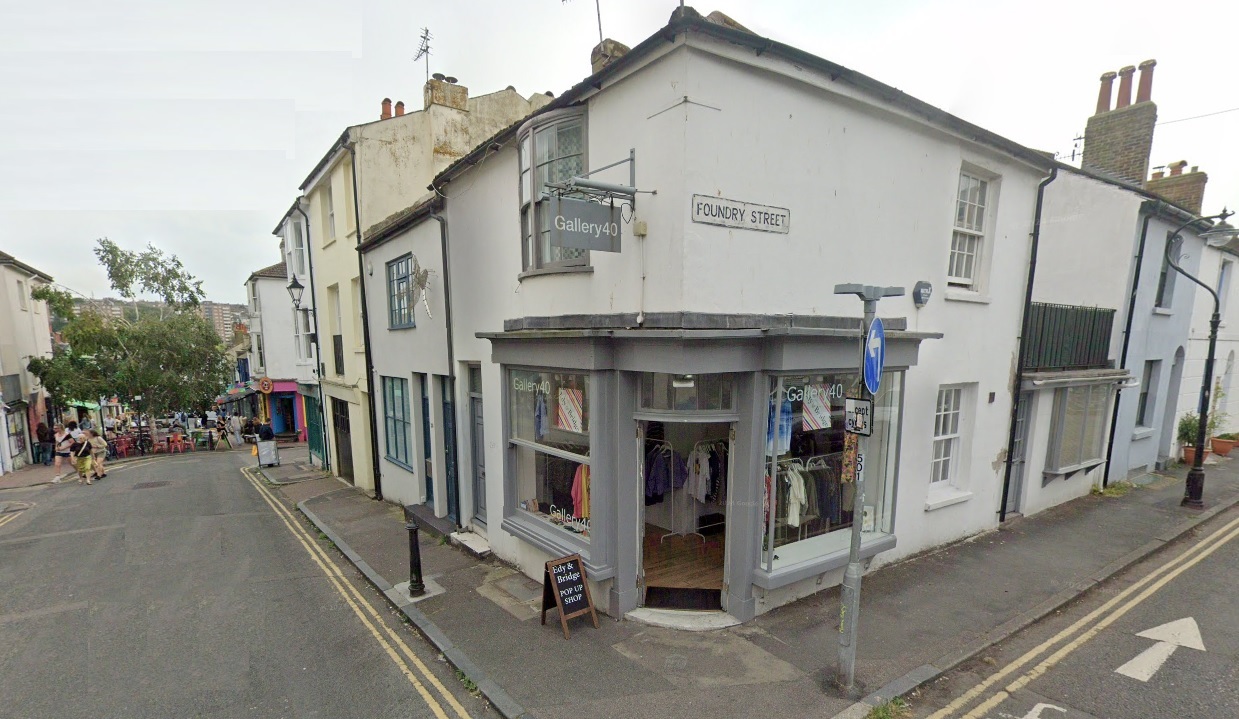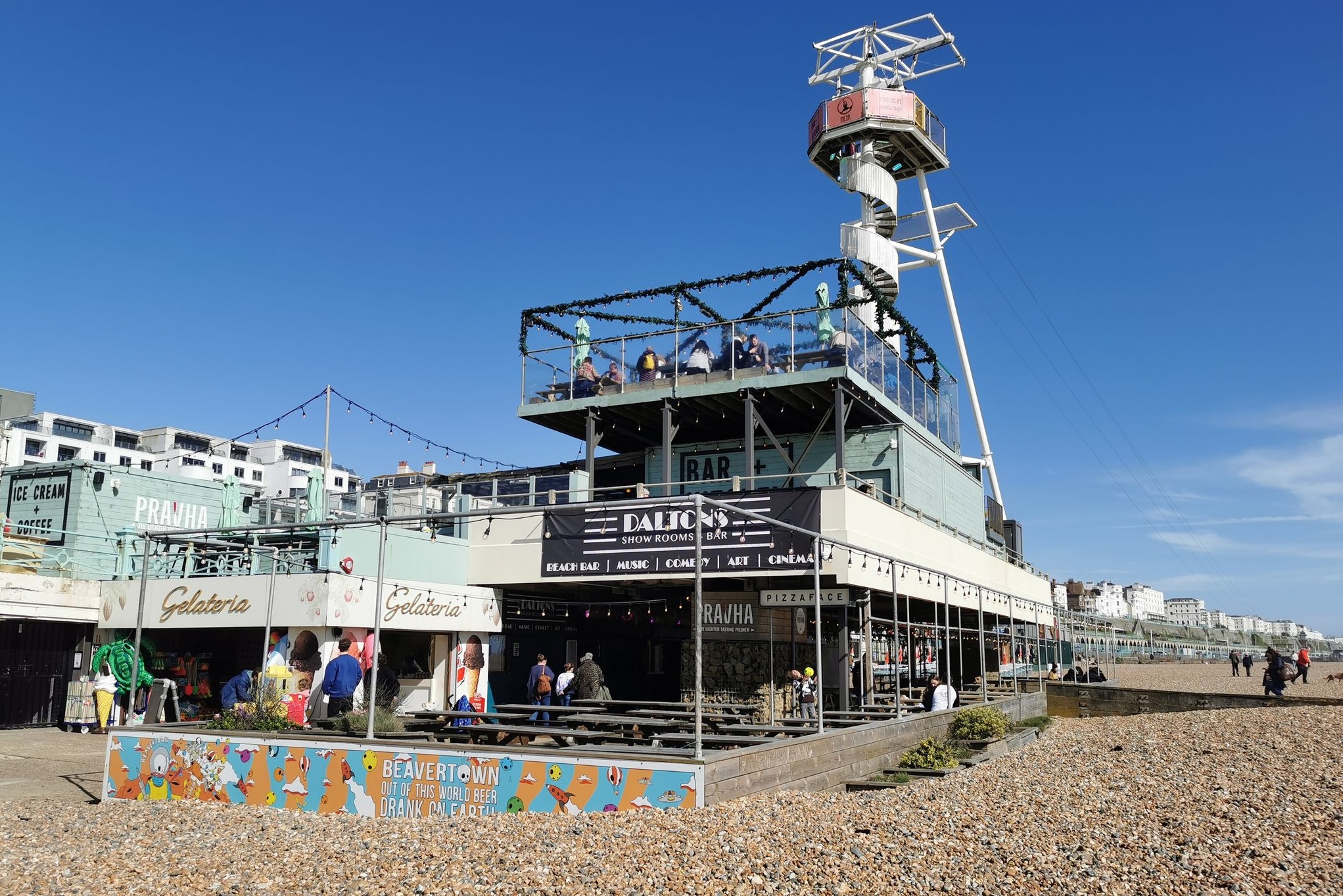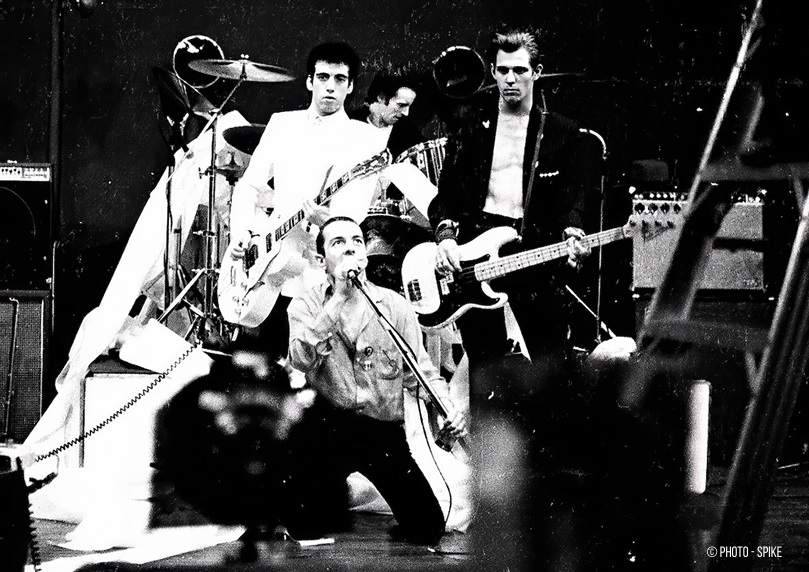A collection of previously unseen photographs featuring Blondie, John Lydon & PiL, The Clash, Madness, The Specials, The Selector, Sham 69, The Undertones, The Go-Go’s, John Cale, The Cramps, X (and many more) taken in Los Angeles venues by Spike from 1978-1980, will be on display here in the North Laine area Brighton for five days from Tuesday 14th to Saturday 18th October.
The exhibition is titled ‘Picture This: A Public Image’ and will be showing at Gallery 40, which is located at 40 Gloucester Road, Brighton, BN1 4AQ from 12 noon until 8pm each day, and it’s free entry.

It will also cover the extraordinary life of the photographer Spike who also briefly worked as a paparazzo in Hollywood and has dedicated his time to activism and promotion of punk bands and punk ideology.
A selection of 40 previously unseen prints will be on show along with Spike’s personal archive of contact sheets, zines, magazine covers, record releases and images from his life in LA and San Francisco’s anarchist, punk and queer scenes.
There will be a programme of acoustic performances from the best of Brighton’s emerging bands throughout the week (line up to be announced) and will culminate on Saturday 18th with a free gig at ‘Garageland’ at Daltons on Brighton seafront under the zipwire at Lower Promenade, Madeira Drive from 9pm.

The exhibition will tour other venues in the UK from January 2026 – details to follow.
Unframed and signed affordable prints and original photographs will be available to purchase throughout the week. Contact jasebick@gmail.com
Note from Jason Bick – exhibition organiser:
I met Spike at a mutual friend’s birthday party in 2024; we got talking and I explained I was working on a documentary with Debbie Harry and Chris Stein from Blondie as executive producers. Spike said he’d taken photos of the band in L.A. in the late 70s, he showed me a few on his phone and I immediately agreed to license the shots from him.
It’s unusual to come across previously unseen images of such high quality. I was intrigued by this modest and talented person, so we discussed his time as a paparazzo and subsequent move to photographing bands and more recent work promoting live bands.

As we drank, chatted some more and looked through his archive on his phone, I decided I wanted to organise an exhibition, and thankfully Spike was delighted at the idea.
Making documentaries is a process of discovery for the makers and the best ones ensure the audience is taken on the same journey when watching it.
My hope is that fans of photography and music will enjoy these newly unearthed images for the energy and vision hardwired into them. I also hope that Spike’s life story, which will form part of the exhibition, will inspire others to talk about their own lives with pride and passion.
This is a great example of what meeting new people and taking time to ask them about their lives can reveal.
About photographer Spike:
In 1975 aged 17, Spike left the safety of N. Miami Beach suburbia for the wilds of Los Angeles to study photography at junior college.
“I met some professional photographers taking photos of celebrities and I started doing the same, one thing led to another, and I got taken on by a photo agency, Michelson Photos”.
He worked as a paparazzo with the likes of ‘the godfather’ Ron Galella of Jackie O fame.
“I was on a percentage deal, for a guy my age it was good money, so I quit college, I wasn’t getting anything out of it, and I was already working as a photographer.”

Spike worked hard and long hours for two years, it was exciting work and his skill as a photographer was honed sharper every day.
“Most of it was black and white so I rented a dark room at a community college, developed all my own film, and printed out the 8 x 10 photos to give to my agent.
I did that for about two years full time, chasing celebrities, standing outside expensive restaurants in Beverly Hills, going to all the award shows, the Oscars, the Emmys, the Golden Globes, Screen Director’s Guild. That was my life, but the competition was brutal and it’s not kind to people.
The competition was so acute that I had this experience where someone was smashing my car window on a regular basis. I would be covering at the Beverly Hills Hotel; I was parked a few blocks away on the street, I’d come back, and the window would be smashed. This must’ve happened about ten times. It’s quite expensive as you can imagine, makes you f*cking paranoid too, I never found out who it was.”
In 1978, whilst living in an apartment in Hollywood, across-the-hall neighbour Don Snowdon, a music critic for L.A. Weekly, introduced him to The Clash’s ‘Give Em Enough Rope’. Spike was hooked. This was quickly followed by local bands X, The Go-Gos, The Screamers, The Germs, The Alleycats and so began Spike’s lifelong love affair with punk.
“We’d park in a lot across from the Whisky, drink a six-pack and head over to the gig, I’d read about the bands in the L.A. Weekly and get tips from friends. There was a good scene for local acts and international bands would come through a lot too.
The Whisky and The Roxy were the best-known venues but there were others we would hit like the Starwood, and I’d be out most nights drinking, watching bands and taking photos. We’d often end up late at night at Barney’s Beanery and Tom Waits would frequently be sitting in a corner writing; he lived at the nearby Tropicana Motel at the time”.
The Clash, with their British sensibilities and political rage, had a huge impact on Spike’s life. He quit his job as a paparazzo and, for the next year, spent most nights haunting the dive bars in West Hollywood and the Sunset Strip photographing punk bands. His partners in crime were Englishman Bill and punk photographer Deborah.
In 1979 English mate Bill blagged an interview with The Clash who were over from the UK by pretending to be a writer from the NME. Spike joined him and photographed them whilst another photographer orchestrated the shoot.
“One of my favourite shots was from the Clash shoot, as the band were being prepped I took pictures as a shoot within a shoot”.
The punk scene in LA was strong but Spike encountered other acts that weren’t strictly in that genre, unlike the UK, the lines were blurred in the US.
“It was an exciting time, bands like The Specials, Selector and Madness played LA on their first US tours, followed by PiL who I shot at the legendary Olympic Auditorium show on May 4th, 1980. A couple of weeks later I got into PiL’s American Bandstand performance and was able to shoot them there too”.

In 1980, Spike funded, photographed, art directed and released Miami Beach’s The Reactions first EP and he was also a member of the Miami ‘cowpunk’ band Roy and the Hayheads.
He moved to London in 1981 and spent the following 18 years bouncing between London, Athens and the Greek Islands, Istanbul, Paris, Thailand, and SE Asia by whatever means necessary.
Returning to the States in 1998, he settled in San Francisco on the recommendation of a friend from Berkeley, Shelly, who he had met in Thailand. He spent a few years working as a chef in an old-school Italian restaurant The Iron Horse, did an html internship at music streaming site, spinner.com owned by AOL, and eventually returned to the hospitality industry and worked as a catering chef.
During this period, he re-discovered American punk via the Bay Area scene and did photography and web design for local bands The Eddie Haskells and The Twots. In his spare time, he was involved in progressive leftist activism and the direct-action anarchist movement as well as promoting the occasional punk rock and roll music night. He was also a member of the queer clown troupe The Drunk Clownz and could often be found at the Eagle bar’s Sunday afternoon Beer Bust in clown costume.
After 10 years in the US and several years running a rock’n’roll restaurant/bar on a Thai island, he returned to London in 2009 and started now ‘legendary’ punk night Garageland which has just celebrated its 15th year anniversary.
Spike is currently living in Brighton and running monthly Garageland shows at various venues in the city and London.








